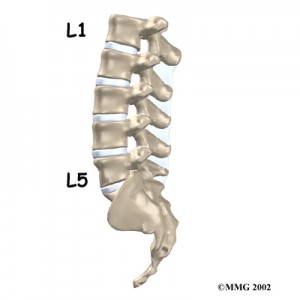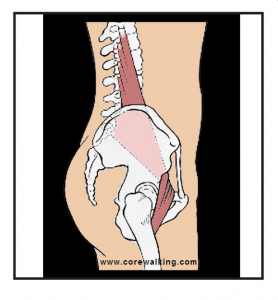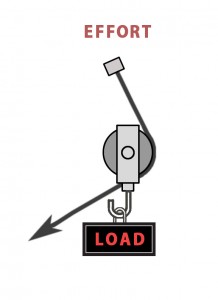The essence of the upright body lies in the lumbar curve of the spine.
These five bones have an anterior curve (inward) and hold up the trunk transferring the weight of the head and shoulder to the pelvis and legs.
Without the lumbar curve, we could not walk upright on two legs.
Our nearest relatives the chimpanzee can walk upright for a few steps before returning to their knuckles mainly because they have no lumbar curve in their spine.
In my home, we have a dog and two cats. They have flat lower spines because a four-legged animal does not need the lumbar curve. After all, it does not need to remain upright any longer than it takes to lick my face or destroy our furniture with their claws.
There are numerous theories about how and why we became upright but one thing is for sure— we are the first and only mammals with a lumbar curve.
The psoas, my favorite muscle, is also known as the tenderloin. This is because, in a four-legged animal, the psoas muscle crosses from the leg to the spine without touching the pelvis.
The human psoas wouldn’t be all that tender because it crosses the rim of the pelvis in a very different way than in a quadruped.
Two major changes took place when we came up to stand. For one, we developed large gluteus maximus muscles.
If you think of dogs, cats, horses or cows, etc., they don’t have our bubble-like butts. The second development was the birth of the lumbar curve, created as the psoas moved across the rim of the pelvis.
When the psoas came into contact with the pelvis tension was created as the spine moved upright on top of the legs. The tension resulted in the psoas pulling the lower spine forward bringing the lumbar curve into being.
This was a major event because the lumbar curve, along with our thinking brain, among other traits, make us distinctly human.
As brilliant and astounding as this development was, the repercussions are still being dealt with, and not all that successfully.
As nice as it is to stand, walk, talk, and do yoga, the overwhelming amount of back shoulder hip, and every other pain comes from a skewed relationship that most of us have with our lumbar curve.
All the work of my CoreWalking program begins with aligning the pelvis and lumbar curve and poor sitting and standing posture is almost always related to the lumbar curve being improperly aligned.



